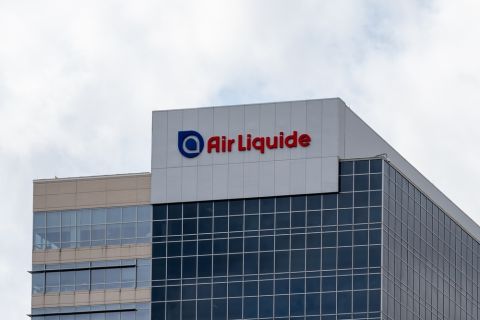Presented by:

When midstream companies compress gas at compressor stations along the pipeline route, excess heat is produced at temperatures as high as 900 degrees. This heat is usually allowed merely to dissipate and thus is a wasted source of potentially useful energy.
Instead of being allowed to dissipate, however, the heat can be harnessed to produce electricity through the installation of electricity-producing turbines. Because no incremental combustion of fossil fuels is associated with the production of such electricity, waste heat provides an emission-free source of clean or green power. According to the Department of Energy, there is an opportunity within the U.S. to produce 15 gigawatts of power from heat that otherwise would be wasted.
A federal tax credit recently became available for investment in the equipment to harness such energy, thereby giving midstream companies the opportunity to improve their sustainability or ESG profile by producing green power while offsetting a portion of the associated capex with a tax credit.
On Dec. 27, 2020, Congress enacted the Consolidated Appropriations Act, 2021, Public Law No. 116-260, in which it recognized the green nature of waste energy projects by adding, beginning in 2021, “waste energy recovery property” to the list of property eligible for the energy tax credit set forth in Internal Revenue Code Section 48.
Tax credit for waste energy projects
The amount of the credit is equal to the taxpayer’s basis in such property multiplied by:
- 26% for property of which construction begins before 2023; and
- 22% for property of which construction begins in 2023.
As an example, if the power project begins construction in 2022, and the capex on the project totaled $30 million, the credit would be $7.8 million. Under current law, the credit is not available if construction does not begin before 2024 or the project is not placed in service before 2026.
Credit requirements
This new law defines “waste energy recovery property” as “property that generates electricity solely from heat from buildings or equipment if the primary purpose of such buildings or equipment is not the generation of electricity.” Since the primary purpose of gas pipelines and gas compression stations is not the generation of electricity, property using heat from midstream equipment to produce power should be a qualifying property.
In addition to covering investment in equipment, such as turbines, that produces power from waste heat, the credit is also described as covering investment in equipment (usually referred to as “turboexpanders”) that captures a portion of the wasted energy from the pressure letdown that occurs when gas moves from transmission pipelines into local distribution pipeline networks.
The statute imposes a size limitation, stipulating that qualifying property may not have a production capacity in excess of 50 megawatts. The statute also provides that property shall not be treated as waste energy recovery property for purposes of Section 48 if it is part of a combined heat and power system unless the taxpayer elects not to treat such a system as a combined heat and power system. These limitations should not be problematic for most midstream installations, however.
To qualify for the energy tax credit, the waste energy recovery property must meet the general requirements of the energy tax credit. For example, the waste energy recovery property must have been constructed by the taxpayer or, if acquired by the taxpayer, the original use thereof must commence with the taxpayer. The waste energy recovery property must also be property that is eligible for depreciation—for example, not land. No property used outside the U.S. is eligible for the credit.
Finally, a taxpayer that sells its interest in the property or otherwise ceases to be eligible for the credit within five years of the date the property is placed in service is subject to a clawback, or recapture of a ratable portion (20% for each of five years) of the credit claimed.
Impact of the credit on depreciation
Notably, the cost basis for depreciation of any waste energy recovery property with respect to which the credit is claimed is reduced by 50% of the amount of the claimed credit. Claiming the credit therefore provides a frontend tax benefit at the price of a diminution (to the extent of 50%) in subsequent depreciation deductions over time. Even with reduced depreciation, however, most taxpayers would consider the credit claim to be more advantageous. It provides a current benefit that is in excess of the tax savings from full current depreciation (26% credit vs. depreciation at current corporate rate of 21%) while still allowing partial depreciation over time.
Proposed legislation may further enhance tax credit
At this writing, the fate of the Build Back Better Act and its extensive clean energy tax incentive provisions is uncertain. If enacted, however, the currently proposed provisions would extend the waste energy tax credit by 10 years to cover property the construction of which begins before Jan. 1, 2034. Moreover, the credit rate would increase from 26% to 30%. To claim the tax credit at the 30% rate, taxpayers would be required to satisfy certain prevailing wage and apprenticeship requirements during construction and operation, however.
Importantly, the proposed legislation would offer taxpayers the ability to make a “direct pay” election, pursuant to which the credit amount would be treated as a payment of tax, thereby generating a cash refund to the taxpayer to the extent that the taxpayer has no tax liability. As a result, even taxpayers without a tax liability could use the credits to create cash flow.
Midstream gas companies, especially those companies feeling either management or shareholder pressure to “go green” should consider whether a waste energy recovery project makes sense in light of the value of the tax credit. The potential to use the credit to reduce the cost of initiatives a company feels compelled to undertake, as well as the possibility of an even further enhanced credit if proposed legislation is enacted, makes this an exciting tax incentive to consider.
Barbara S. De Marigny is a partner in the Houston office of Baker Botts and focuses on tax structuring for transactions, with a particular emphasis on federal income tax issues arising in partnership, joint venture and alternative investment structures.
Michael Bresson is a partner in the Houston office of Baker Botts. He concentrates on federal income tax matters, with a particular emphasis on renewable energy transactions, publicly traded partnerships, YieldCos, private equity transactions and M&A.
Recommended Reading
CAPP Forecasts $40.6B in Canadian Upstream Capex in 2024
2024-02-27 - The number is slightly over the estimated 2023 capex spend; CAPP cites uncertain emissions policy as a factor in investment decisions.
Air Liquide to Add CO2 Recycling at Plant in Germany
2024-02-08 - In a supply agreement, Air Liquide and Dow plan to add a new CO2 recycling solution to two air separation units and one partial oxidation plant.
1 Fatality in Equinor Helicopter Training Accident Offshore Norway
2024-02-29 - Equinor employee died following the helicopter accident, the cause of which has not been reported.
Equinor Resumes Helicopter Flights on NCS Following Fatal Accident
2024-03-01 - Operator also announced it is expanding its helicopter fleet by 15 through contracts with Bell and Leonardo, with the first two helicopters slated for delivery in about a year.
Coalition Launches Decarbonization Program in Major US Cities, Counties
2024-04-11 - A national coalition will start decarbonization efforts in nine U.S. cities and counties following a federal award of $20 billion “green bank” grants.





